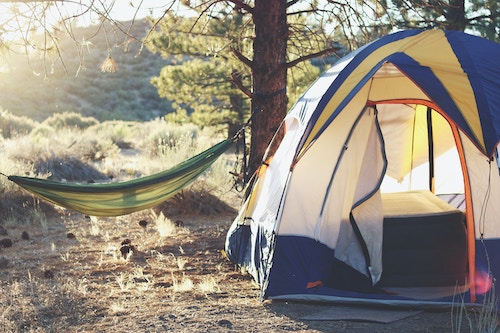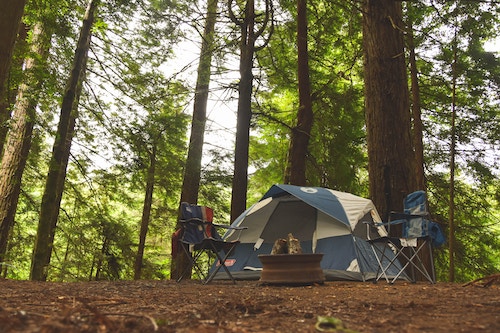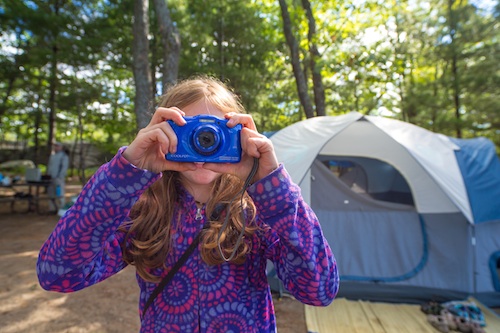What you need to know to start camping this fall
A beginner's guide
Camping is a wonderful experience for individuals, families, and groups. It’s an age-old activity that allows for communing with nature and sharing special outdoor experiences with those closest to you or solo. But there are those out there who haven’t had a chance to experience sleeping under the stars. For those, we humbly ask, what are you waiting for? Here are a few tips to get you started with camping in the front country. Or, what is more popularly known as car camping.
Plan aheadStraight across Canada, camping is a popular activity and the best parks and campgrounds fill up quickly. Luckily, camping in the fall means there is a lot more choice when it comes to campsites. Most front country campers end their adventures after Labour Day weekend. So, even popular parks such as Algonquin should have sites available throughout autumn when this area and others are in full-fall-colour mode.
In general, consider booking campsites during off-peak periods such as the fall or even early spring such as in April, May, or June leading up to the summer before school is out, as well as in the early fall. If limited to summertime camping, try booking during the week and avoid weekends.
In addition, there are services such as Campnab that help campers find an available spot. The site does not book campsites at all, and it does not resell campsites. It simply uses a program to scan the reservation system for new sites that pop up after cancellations during the camping season. And that happens a lot.
Once you’ve chosen the campground, try to find a site with some added value: far away from the washrooms, in the tent-only or quiet section, and note any amenities or lack thereof such as picnic tables, fire pits, etc.

Once a site is booked, it’s time to consider what gear is needed. And there is a lot from which to choose including tents, sleeping bags and mats, lighting, cooling, cooking systems, water filtration and purification, food, and much more.
For fall camping, pay attention to the weather report and be sure to pack to anticipate a potential quick change in weather. Get a sleeping bag that is rated for at least three if not four seasons, for instance. Pack and dress in layers with a good base layer of a breathable fabric such as merino wool.
The most important item to consider is a tent. Be sure to get a good one. The style and size of the tent are dependent on whether the plan is to go car camping, backpacking, solo camping, or canoe camping, for example.
For car or front-country camping, which involves finding a campground, booking a spot, and showing up and sleeping in a tent, the size isn’t as much of an issue. But, generally, the larger the size of the tent, the more complex it can become.
Check out the Get Out There YouTube channel for tent reviews, and do additional research online to find the correct model.
Before heading out to the campground, be sure to test the tent out in your backyard, or even your living to make sure you have it down just in case of arrival at the campground at night.
And, no matter what tent is chosen, be sure it is waterproof. If it isn’t, get some silicone sealant and make it so.
The perfect pitchWhen first arriving at the campsite, survey the area and find a good flat spot to pitch the tent. A flat spot is key for a good night's sleep, and for proper drainage in the event of a serious rain event.
Sleeping like a logA good tent is breathable with venting and somewhat dark, but beyond that, the key to a good night's sleep is in the mattress pad. Finding a comfortable sleeping pad is important, especially during the warm summer months when a sleeping bag isn’t as crucial. The worst thing is to overheat during the night. Some sleeping pads are super light and compact, which is key for backpacking. For front country camping, we can go bigger and use a self-inflating pad or air pad. Look for something with good cushioning that packs down to a reasonable size.
Mess HallEverything tastes better after a beautiful day in the great outdoors. So, ‘keep it simple’ should be the mantra.
Many campsites will have a fire pit for roasting marshmallows and the occasional wiener on a stick, but the rest of the meals might depend on the type of cooking equipment.
There are plenty of options available, to be sure, from full-on gourmet camp stoves to simple burners to set-ups such as the Biolite fire pit. But most settle on a nice two-burner gas camping stove.
Once a cooking system is determined go ahead and plan out meals and start prepping food as much as possible. One-pot meals, for example, are a great option for around camp as it creates little mess, don’t take long to cook, and are great for sharing.
Chopping veggies, and doling out portions of spice and seasoning in sealable containers or reusable bags is a good idea.
Check out this article for five easy camping meals.
Don’t forget to bring dishes, pots, and other eating accoutrements, which can either be brought from home or purchase a set just for camping. Campers will need a little washing bin, soap, and a cloth or scrub brush as well.
The last word of advice is never to underestimate the importance of a good cup of coffee at sunrise. A French press is a handy device to have around the campsite, as are small espresso makers. Live a little, and put the coffee first.

Camping at Killbear Provincial Park (Photo: Nobel - Killbear Provincial Park)
Coolers and storageAs this is the great outdoors, food attracts all kinds of bugs and animals. Don’t leave food sitting around in grocery bags and cardboard boxes. Bring along clear plastic and sealable bins to keep things tidy and critter-free.
Also consider investing in a good cooler, such as a Yeti hard cooler. These items are durable, they work very well at keeping items cool in between trips for ice, and in a pinch, they make a great seat.
Light up my lifeDon’t bother looking around the site for a light switch because there isn’t one. When the sun goes down, you’re on your own. So, best have some sort of lighting planned out. That can be as simple as a flashlight, but whatever option is taken, test it before leaving home, and bring spare batteries.
A good camping lantern works well as it provides cool ambient light that isn’t a harsh contrast to the surroundings. Also, having a headlamp or two around camp is good, especially for heading to the washroom at night, cleaning up, or generally anything that requires you to have your hands free. Leave one in the tent, and another in the cooking area.
Don’t forget toiletriesNot that you would. But, yes, stock a little toiletry bag for the trip that includes essentials like soap, toilet paper, and a hand towel if the campground bathrooms are short-supplied. In addition, sunscreen, and insect repellant are must-bring items along with a first-aid kit, and any special personal items that are required.
ClothingWhat you wear depends on when you go camping. Be prepared for all manner of weather that could occur including rains, wind, sunny days, and chilly nights. Shirts and pants should be quick to dry and have some sun protection. A warm layer, and a rain jacket at the ready when needed. Get a good hat.

In the age of social media and sensory overload, the time around camp, especially in the evenings, can be slower, which is a good thing! Although most campgrounds these days have cell phone service, and there will be phones and tablets ablaze at some sites, it is good to take the opportunity to unplug. To do that effectively, plan games and activities to keep busy. Books are great, crossword and other puzzles, as well as cribbage and cards which are great for around the picnic table.
Clean upAlthough this is car camping, it is a good idea to get used to the idea of leaving no trace. This is Mother Earth we are talking about, and those who appreciate the outdoors need to learn to take care of it from the beginning. That means, packing out all garbage, and food waste, even if that is as simple as walking it to the campground dump or garbage depot. Don’t leave any embers burning in the fire pit. And give the site a once-over to make sure you haven’t forgotten any of that new gear.

 Tweet
Tweet Share
Share